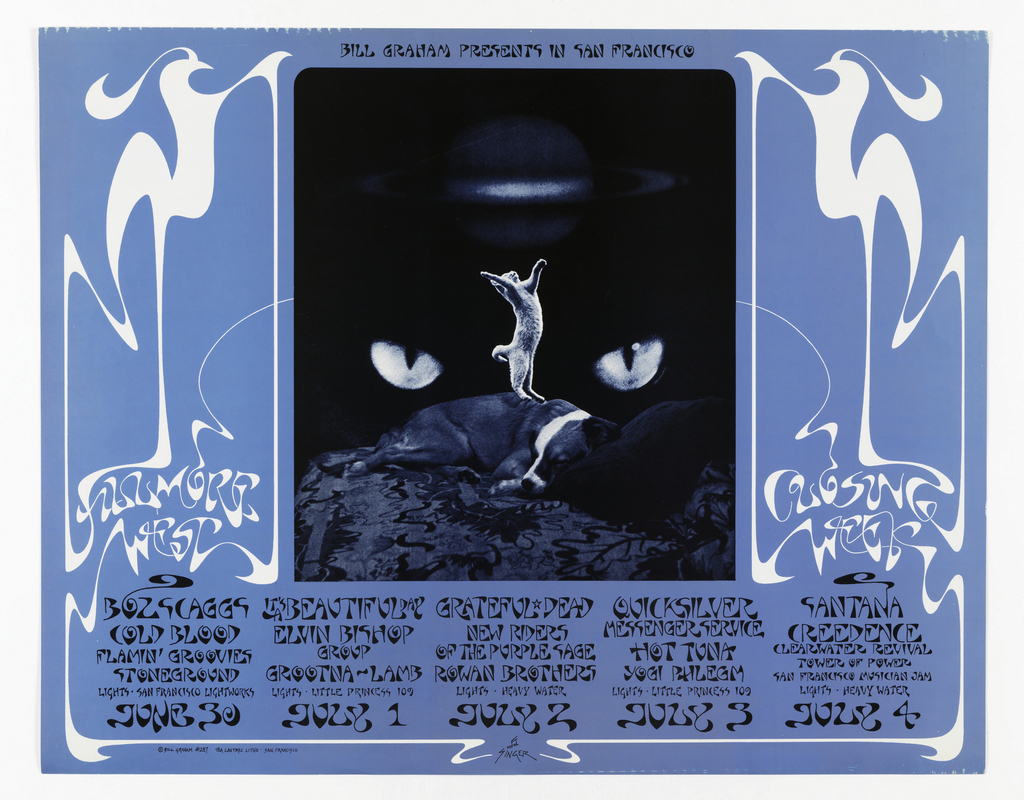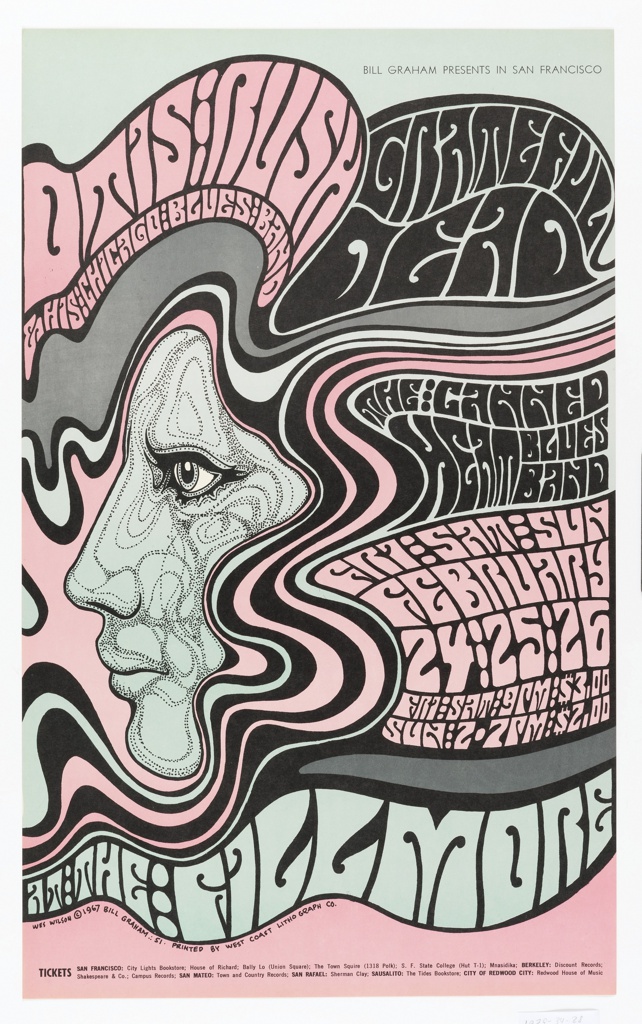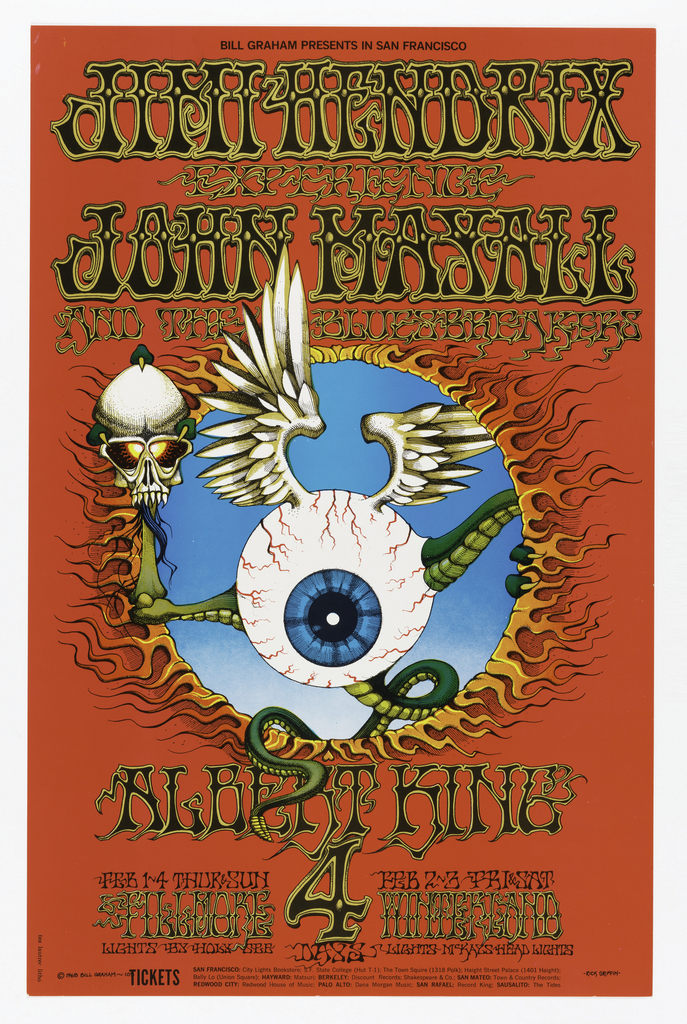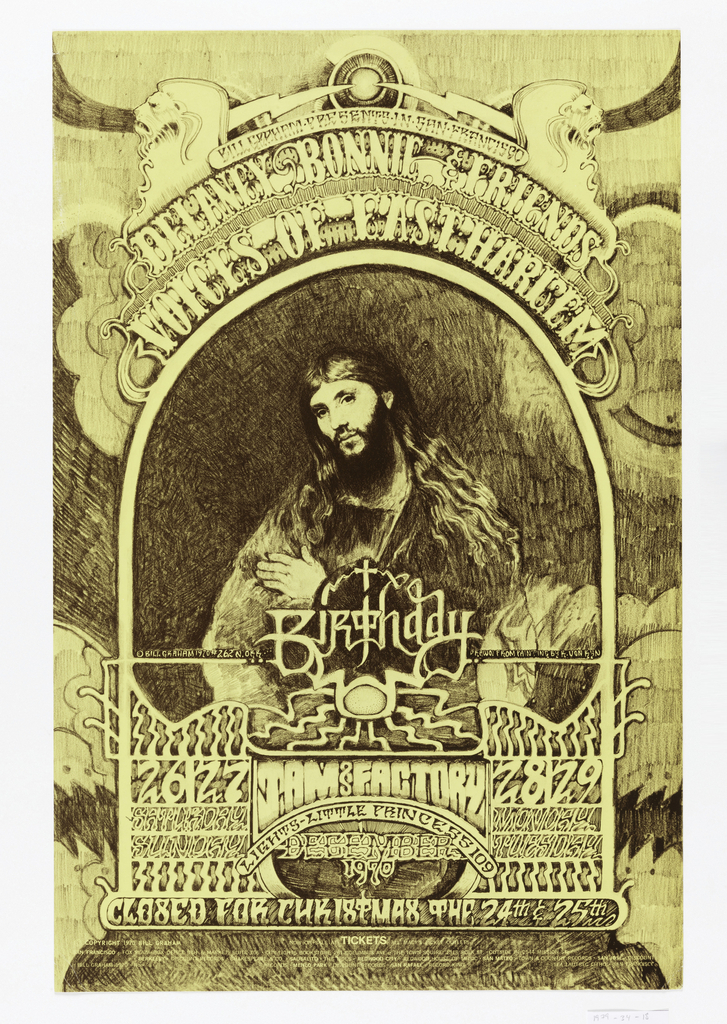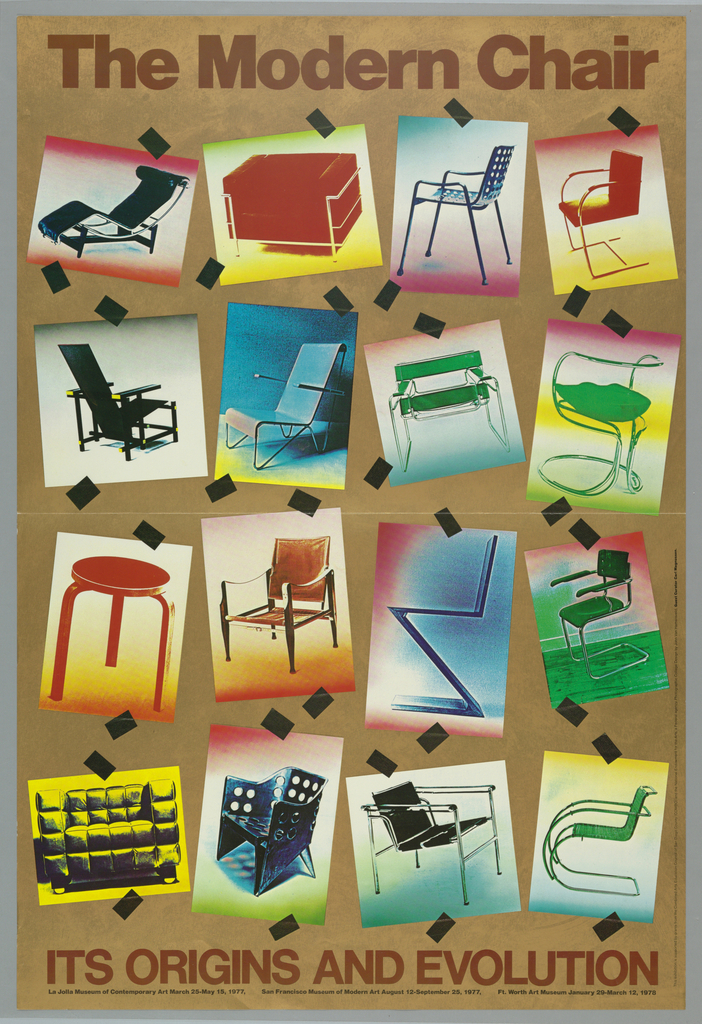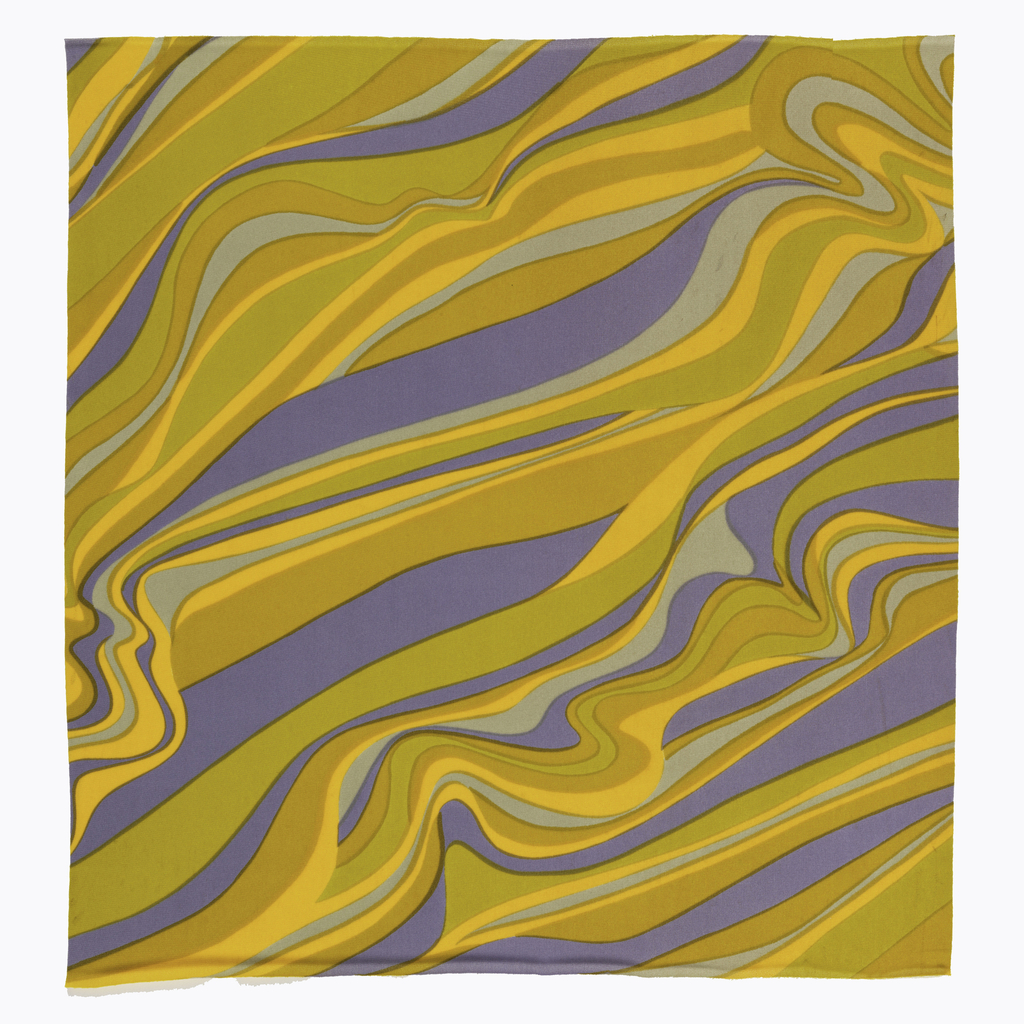Day-Glo® : a moniker describing shades of orange, pink, green, blue, and yellow so bright they seem almost incandescent. The Day-Glo® Designer’s Guide, a trade catalogue in the Cooper Hewitt National Design Library, was published in 1969 at the height of the psychedelic era. The catalogue celebrates Day-Glo® colors at the peak of their popularity with the...
Before turning his attention to graphic design in the mid-1960s, Tadanori Yokoo (b. 1936) first trained as a painter and worked as a stage designer for avant-garde theater productions in Tokyo. By the late 1960s, however, he was best known as a graphic designer. His work drew international acclaim when it was included in the...
As the San Francisco rock scene grew in the 1960s, posters were commissioned by the concert promoter Bill Graham for shows at popular venues such as the Fillmore Auditorium. David Singer produced more posters for Graham than any other artist, designing 75 posters from 1969 to 1990.[1] Although he had an unusual background for a...
A pioneering example of psychedelic design, this work was one of the 56 posters that Wes Wilson produced between 1966 and 1968 for the Fillmore Auditorium in San Francisco. The posters were commissioned by the rock concert promoter Bill Graham, who gave Wilson free rein over his designs until disputes about money severed their connection....
The 1967 “Summer of Love” in San Francisco ushered in a wave of music lovers, rock bands, and graphic artists. Psychedelia drifted through the air and inspired the creation of free-form, vibrant compositions in all creative fields. Concert posters became the relics of the San Francisco music scene, created to promote music and dance venues...
Posters produced in the 1970s for The Fillmore, the legendary San Francisco music venue made famous by industry pioneer Bill Graham, were renowned for their psychedelic styling. Between 1967 and 1971, Tea Lautrec Litho, a specialist printing house operated by Levon Mosgofian, produced over 200 posters advertising Graham’s constantly shifting roster of weekly performances. The...
This poster for the La Jolla Museum of Contemporary Art’s exhibition The Modern Chair: Its Origins and Evolution was designed by John van Hamersveld in 1977. Van Hamersveld, a California born and bred graphic designer, is most widely known as the artist behind the iconic 1964 Endless Summer movie poster. Incorporating fluorescent paints and striking graphic language, van Hamersveld brought...
In addition to studying traditional textiles around the world, Jack Lenor Larsen firmly believed in investing in the future, and in devoting resources to developing new textile technologies. He frequently use-tested his latest fabrics in his own home. “Every year at my Gramercy Park apartment I redesigned the interior as a means of experimenting with...
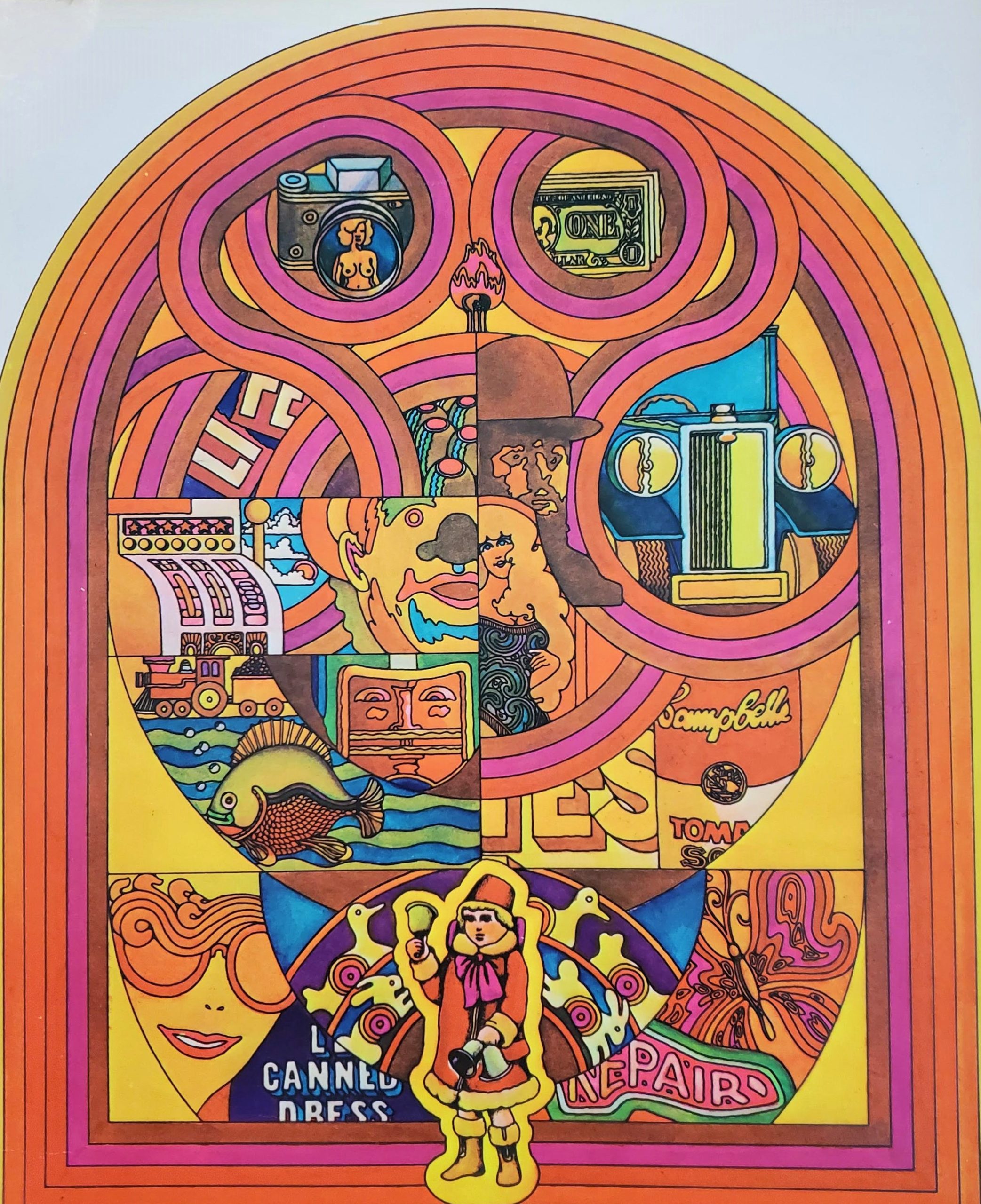
![Poster for the 1968 exhibition at the Museum of Modern Art, “Word and Image: Posters and Typography from the Graphic Design Collection of the Museum of Modern Art, 1879–1967.” Across top margin in white text: WORD IMAGE WORD IMAGE WORD IMAGE [sic]. Below, on a black ground, four open mouths with pink lips, white teeth, and a red tongue arranged in a 2x2 grid. At bottom, red and blue rays emanate from a large, blue eye with a pink lid. Across bottom margin: THE MUSEUM OF MODERN ART, NEW YORK, JANUARY 24–MARCH 10 / DESIGNER TADANORI YOKOO COPYRIGHT © 1968 THE MUSEUM OF MODERN ART POSTER ORIGINALS LTD., NO. 89.](https://www.cooperhewitt.org/wp-content/uploads/2020/01/CHSDM-292887_01-000001-scaled.jpg)
